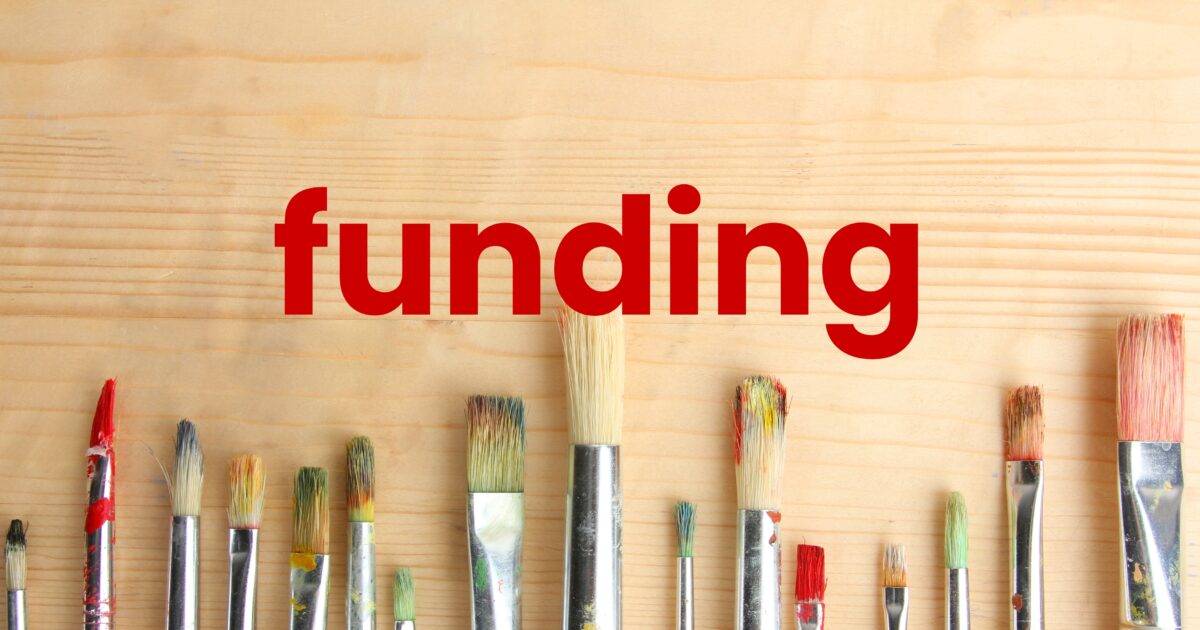“Incoherent, biased, and focused on preserving the status quo”- that’s how a 2022 Department of Internal Affairs (DIA) review described the way in which Lotteries profits are handed out. The review set out to identify ways to improve a funding system that many people felt was broken. Changes proposed by the review include a shift in the way that the Lotteries Grants Board (NZLGB) allocates funds to the three statutory bodies that support arts, culture and creativity. Creative New Zealand, The New Zealand Film Commission and Ngā Taonga Sound and Vision all receive a portion of their funding directly from Lotteries profits, with Creative New Zealand relying on the Lotteries for 72% of its funding.
Writing in a blog published recently on the Creative New Zealand website, Chief Executive Stephen Wainwright has sounded a warning to the sector that we are in for some financially challenging and constrained times ahead:
“We’re adapting to the prospect of materially less revenue to invest in the sector from July 2024″.
NZLGB has recently advised Creative New Zealand that the arts development agency will in future receive a set amount, instead of a percentage of lotteries profits. Noting that the NZLGB review is still ongoing, Wainwright says that based on current forecasts, Creative New Zealand are set to receive about $5 million less in funding than in the previous year.
It’s worth noting that funding from Lotteries has to some extent masked a deeper problem for arts funding in New Zealand. There has been no significant change to Creative New Zealand’s baseline government funding for some years. The current level of funding direct from the government is broadly at the same level as it was in 2006/07. Wainwright’s blog on the financial outlook for Creative New Zealand was followed yesterday with news of his resignation from the role- there is no suggestion that these two things are linked, as Wainwright is moving on after three decades of service to the arts sector, but it’s clear that as a sector we are heading into a time of change.
The end of the post-COVID funding boost
This news comes at a time when the arts sector is already dealing with scarcity. Many of the one-off funding injections that we saw in response to the COVID-19 pandemic are now wrapping up, including the one-off boost of $22 million that Creative New Zealand received from Manatū Taonga Ministry for Culture and Heritage in early 2023. The creative sector is experiencing the same challenges from high inflation and increased cost of living that the whole country is grappling with. As Steph Walker, Executive Director of WORD Festival in Christchurch, noted in a recent piece for The Big Idea, it is often arts and culture that is first on the chopping block when times get tough:
“The thing is, there isn’t anything left to chop off- All the fat has gone”.
Is there any good news?
Whilst the ‘storm warning’ sounded by Creative New Zealand doesn’t give us much to smile about, and the constrained budget will undoubtedly impact available funding for arts and culture projects, Creative New Zealand is pushing ahead with a suite of significant changes to their funding programmes. Earlier this year, Creative New Zealand embarked on a major review of how they support arts development. A series of hui were held in 14 locations around the country with artists and practitioners from all artforms giving feedback on their experience of engaging with Creative New Zealand. The review was a response to increasingly vocal and frustrated feedback from across the sector, that Creative New Zealand’s funding programmes were no longer fit for purpose. The outcomes of this review have finally been revealed today, with the announcement of a comprehensive new funding programme, to be known as “For The Arts”
Shifting the focus from ‘outputs’ to ‘impact’
The newly announced funding programmes have been designed to provide support in a way that encourages long-term development, as opposed to a short term project based funding approach.
Creative New Zealand’s Senior Manager, Arts Development Services, Gretchen La Roche has explained that these changes represent a
“new way of working with the sector, supporting artists and arts organisations with an emphasis on vision and purpose, valuing artists’ time, supporting longer-term development and building relationships with artists and organisations outside of funding alone.”
Dedicated funding for three distinct groups
The new funding model acknowledges that our arts sector requires different kinds of support at different times to grow and succeed. Dedicated funding opportunities will provide tailored support to early career artists, artists and practitioners; and arts organisations and groups. Previous funding rounds have seen every applicant assessed in the same way, putting the work of an emerging independent artist in competition with an established arts organisation. The new approach is ditching the ‘one size fits all’ model, in a move designed to provide accessible, focused and fairer support.
The programme includes eight new funds, ranging from an Early Career Fund designed to provide support for artists and organisations at the early stages of their practice, through to a Creative Impact Fund to make, share and present work that enriches audiences and communities, encouraging understanding and participation. There is also a new Residencies, internships and fellowships fund, along with a New Leaders Programme supporting new and emerging leaders to grow their skills and build peer-support networks.
Whilst the new funding programmes provide a greater range of opportunities and appear more accessible to a wider range of people than previously, these gains are somewhat offset by an overall reduction in the top level of funding on offer through these contestable programmes. Arts grants were previously available to support projects of up to $75,000 with annual arts grants available of up to $150,000. The new programmes will provide funding of up to $50,000 and $125,000, depending on the nature of the project you apply for. Creative New Zealand explains that this is in direct response to budgetary concerns:
“we’re adapting to the prospect of materially less revenue to invest in the sector from July 2024. We have however been able to increase the flexibility of how you utilise the funding and in a number of instances, offer funding for longer periods of time of up to 24 months. While we recognise there is a material lowering of total amounts that you can receive, feedback from the sector indicated that greater certainty and flexibility of use was considered highly valuable“
Navigating the new funding programmes
Gretchen La Roche explained that this week’s announcement represents a significant shift for Creative New Zealand:
“We’re moving away from that notion of the short-term, project funding – where people were funded to do a very specific thing. It’s recognising that organisations often have multiple stakeholders and multiple sources of revenue – and not all that can be confirmed at the time of an application. We are very interested in moving from supporting a very specific thing into looking at the wider purpose and impact that that group is having within its community”.
The new programmes will be implemented from July 2024, with a range of online and in person information sessions and follow up Q&A sessions taking place between now and February 2024. Funding HQ will be working with our arts and culture clients directly to explore what the changes mean for you, and we’ll make sure you are kept up to date with how these programmes are implemented. In the meantime, here’s our top three tips on how to strengthen your chances of securing Creative New Zealand funding:
- It’s all about relationships: As a crown statutory entity, Creative New Zealand can feel like a bureaucracy that’s hard to navigate. The thing about all bureaucracies is that they are made up of people- and so building a good relationship can really help you to navigate the complexities of Creative New Zealand’s funding programmes. Creative New Zealand has a team of “arts practice directors”, who provide specialist advice based on artform. You can find the details of the arts practice directors here on the Creative New Zealand website, and It’s well worth getting to know them before you make an application for funding. Think about inviting the relevant arts practice director to come and see your work or visit for a tour and a chat about your organisation. Whilst the team at Creative New Zealand are not able to get to everything, keeping them informed about your work is a great way to stay on their radar.
- There is more to Creative New Zealand than just funding: Many people know of Creative New Zealand as a funder- but as the national arts development agency, they provide a range of programmes and resources to encourage, promote and support the arts in New Zealand. The Creative New Zealand website has some great resources on advocating for the arts, and you can download toolkits covering topics like risk management and working with volunteers. If you’ve made use of the resources that Creative New Zealand offer, then make sure you make reference to this when applying for funding- it’s a great way of showing that you’ve taken the time to engage with Creative New Zealand’s advice outside of just asking for funding.
- Do your research- and look for alignment: Creative New Zealand publish an annual “statement of performance expectations”, outlining their strategic intent and presenting a plan that describes their ambitions for the arts, and their key strategic focus areas. Whilst the document is not exactly light reading, it is well worth taking the time to understand Creative New Zealand’s investment priorities, and what outcomes Creative New Zealand are looking to enable through their funding programmes. If you are able to spend some time reading up on Creative New Zealand’s investment priorities, then you are far more likely to be able to argue how the work you do aligns with their aims and ambitions for the arts in New Zealand. The strategic focus areas through to 2026 have been identified as “Resilience, Access & Inclusion, and Wellbeing”.
James Wilson

